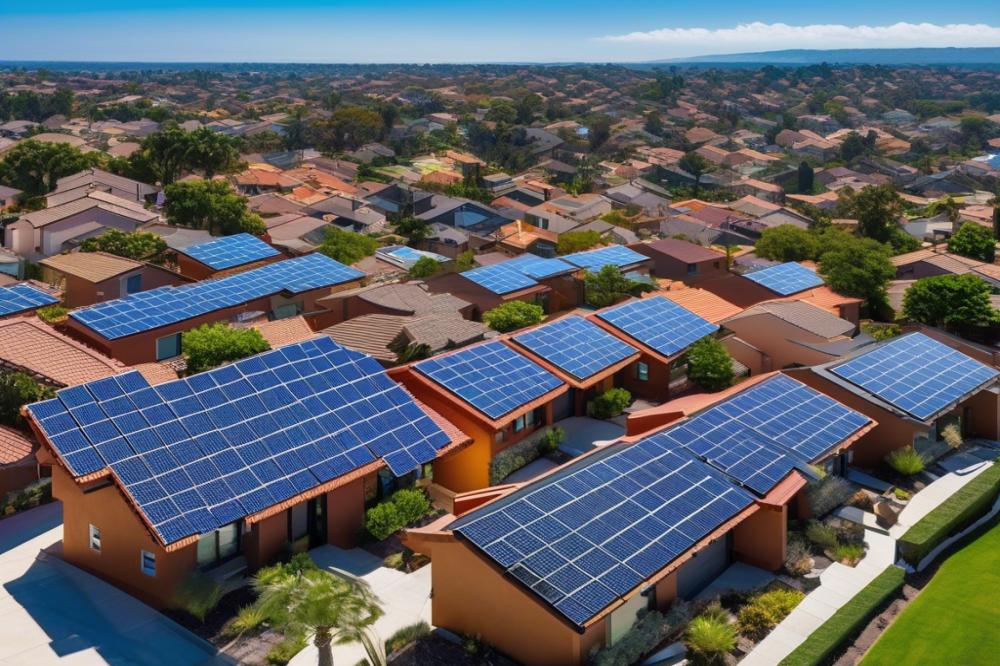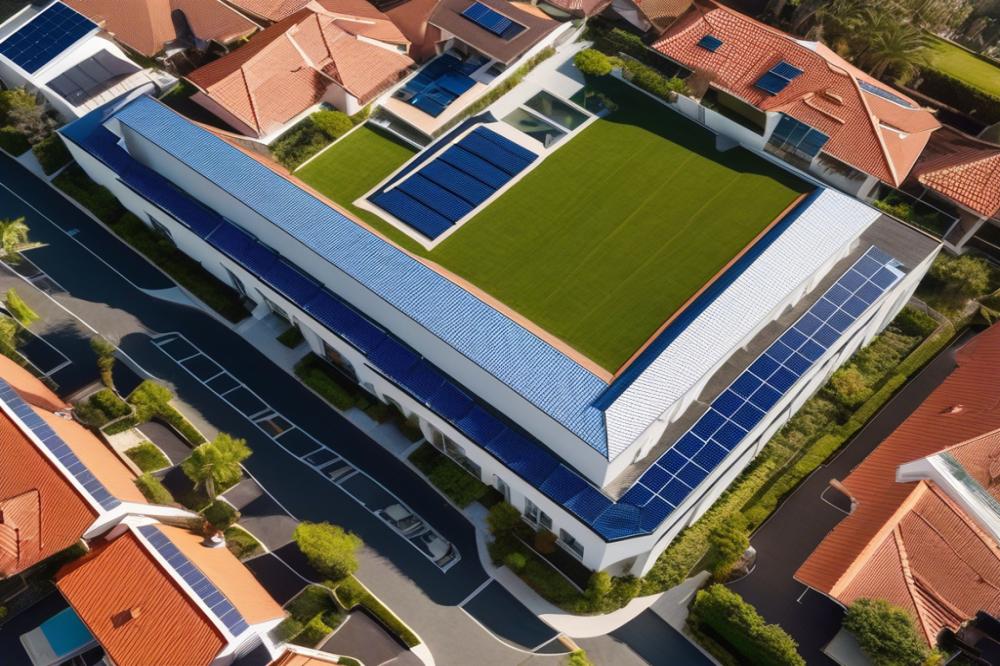A Closer Look at the Materials Behind Cutting-Edge solar roof tiles
solar roof tiles represent a significant advancement in roofing technology. They combine the functions of traditional shingles with the benefits of energy generation. Homeowners can produce their own energy while maintaining an aesthetic appearance. By integrating photovoltaic systems directly into roofing materials, these innovations enable structures to harness solar energy efficiently.
The importance of innovative materials cannot be overstated. Successful energy generation relies on cutting-edge solutions. Sustainable materials play a crucial role in enhancing energy efficiency and reducing environmental impact. When it comes to building-integrated photovoltaics, the choice of material composition directly influences performance and durability. Various materials offer unique properties that can enhance energy capture and overall effectiveness.
This article will explore the fascinating landscape of materials used in solar roof tiles. We will delve into their specific benefits and how they contribute to renewable energy goals. Readers will gain insights into how these innovations are shaping the future of energy-efficient buildings. By focusing on the materials behind this technology, one can appreciate the complexity of transforming sunlight into usable power while considering environmental sustainability.
Understanding Solar Roof Tiles

Solar roof tiles are an innovative solution for capturing solar energy. These tiles integrate directly into a building’s roofing system. Their function is to convert sunlight into electricity through photovoltaic technology. Homeowners can harness renewable energy while maintaining the aesthetics of their property.
When comparing them with traditional solar panels, several key differences emerge. Solar roof tiles blend seamlessly with existing roofs, making them less noticeable. Traditional solar panels often stand out and can disrupt the look of a property. While panels usually mount on top of roofs, tiles replace standard roofing materials. This integration promotes overall energy efficiency.
The concept of building-integrated photovoltaics (BIPV) plays a significant role in modern roofing technology. BIPV systems combine the functions of building materials and solar energy generation. By using sustainable materials, these systems lower the environmental impact of energy production. Today’s advancements in roofing technology allow for better durability and performance than ever before.
Furthermore, integrating solar energy into building designs reflects a growing trend toward sustainable living. People are becoming more conscious of energy consumption and environmental issues. This shift in mindset encourages the adoption of renewable energy solutions. Homeowners find satisfaction in knowing they contribute to a greener future.
Key Materials Used in Solar Roof Tiles

Cutting-edge solar roof tiles incorporate a variety of materials. Glass, silicon, and metals are the primary components. Together, they play crucial roles in how these tiles operate and perform in converting sunlight to energy. Each of these materials contributes a unique aspect to the overall functionality and aesthetics.
Photovoltaic Cells and Their Composition
At the core of solar energy technology are photovoltaic cells. These cells transform sunlight into electricity through a complex process that involves layers of silicon. Typically, manufacturers use crystalline silicon for its high efficiency. Additionally, thin-film technologies are also popular, relying on other materials such as cadmium telluride. Each type has distinct characteristics, influencing factors like cost and performance.
Sustainable Materials in Production
The push for greener solutions promotes the use of sustainable materials. Many manufacturers are exploring alternatives that minimize environmental impact. Recycled glass, for example, is becoming more common in production. This not only reduces waste but also lowers the carbon footprint associated with new materials. Choosing more eco-friendly options is critical in advancing renewable energy technologies.
Innovations for Durability and Energy Efficiency
Recent advancements in materials science are improving the durability of solar products. Innovations include coatings that resist weathering and corrosion. These developments help extend the lifespan of solar applications. Moreover, higher energy efficiency is achieved with better materials that enhance light absorption. This allows for greater energy output in various conditions, making them suitable for diverse climates.
Roofing technology is advancing, integrating building-integrated photovoltaics seamlessly. The design of these tiles allows them to blend into the building structure. This creates a visually appealing solution while providing renewable energy. Overall, the materials used in solar roof tiles are evolving to meet both functional and aesthetic demands.
The Manufacturing Process
The production of solar roof tiles involves several critical steps. First, raw materials like glass, solar cells, and backing materials are sourced. Different types of sustainable materials are chosen for their performance and durability. Next, the solar cells are created using silicon and dopants to form the photovoltaic layers. These components capture solar energy efficiently.
After preparing the cells, they are encased within protective layers. This includes durable glass that withstands weather conditions while allowing sunlight to penetrate. Following this, the tiles are assembled to create a uniform product. Quality control is vital at every stage. It protects the reliability and energy efficiency of the final product.
Material selection plays a significant role in manufacturing. Builders and manufacturers seek materials that meet both performance criteria and sustainability goals. Using lightweight options enhances roofing technology without compromising strength. The choice of materials directly influences the longevity and efficiency of the finished tiles. This approach minimizes the overall environmental impact.
Recent advancements in technology have also made a difference. Innovations such as improved solar cells increase the energy conversion rate. This ensures better performance over time. Additionally, building-integrated photovoltaics are becoming more common. These offer elegant solutions for integrating energy production directly into structures.
Efficiency improves not only through better designs but also through eco-friendly production methods. Companies are looking into ways to reduce waste during manufacturing. Recycling materials used in the production process can lead to a smaller carbon footprint. This shift supports the broader goals of renewable energy and sustainability.
Moreover, technology helps in the development of more versatile solar solutions. High-performance solar panels are now designed to blend seamlessly with traditional roofing materials. This reduces visual impact while providing clean energy. As the industry evolves, continued research into materials and techniques will shape the future of solar roofing.
Performance and Durability
When exploring the efficiency of solar roofing technology, energy generation stands out as a key factor. Solar roof tiles convert sunlight into electricity, just like traditional solar panels. However, their efficiency can vary based on design and material. Many companies are now adopting building-integrated photovoltaics to blend aesthetics with functionality. This integration can enhance energy efficiency, allowing homeowners to generate more renewable energy from the same surface area.
Durability plays a significant role in assessing the overall value of roofing solutions. Both environmental conditions and material quality affect the lifespan of these technologies. For example, exposure to extreme weather can lead to deterioration over time, while some sustainable materials can withstand such conditions better than others. Manufacturers often test their products against hail, wind, and UV exposure to guarantee they can last for decades.
Longevity and Maintenance
Comparing solar tiles to traditional roofing options reveals some intriguing insights. Regular asphalt shingles may require replacement every 15-20 years, depending on climate and wear. In contrast, a robust solar tile system can last significantly longer, often with a lifespan exceeding three decades. Maintenance is another focal point. Solar roofing typically demands less upkeep than traditional options since they are less prone to damages like curling or warping.
The environmental impact of the materials used also merits attention. Smart choices in manufacturing can reduce the carbon footprint throughout a product’s life cycle. While solar panels generally use glass and aluminum, solar roofing alternatives often utilize innovative mixes that contribute to sustainability. This proactive approach can appeal to homeowners interested in adopting eco-friendly practices.
Environmental Impact
Understanding the sustainability of solar roof tiles reveals a lot about their role in modern roofing technology. These innovative products are designed to harness solar energy efficiently. Made from sustainable materials, they not only serve as roofing but also as energy generators. The integration of photovoltaics into buildings marks a significant advancement in how we think about energy use.
The ability to produce renewable energy right from a home’s roof can significantly reduce dependence on fossil fuels. Solar energy not only cuts electricity bills but also brings long-term benefits for the environment. By shifting towards solar panels, we tackle issues like global warming and air pollution. Every home that adopts this technology contributes to a cleaner planet.
Building-integrated photovoltaics serve a crucial role in promoting energy efficiency. This technology makes it easier for people to incorporate renewable energy solutions into their lives. Households can generate their own electricity, leading to lower carbon footprints. Additionally, these systems often have a high durability factor, ensuring they last for years of reliable energy generation.
Much of the environmental impact comes from the materials used. Manufacturers focus on creating products that involve fewer harmful processes. This shift to sustainable production is essential. Using less energy during production means fewer emissions released into the atmosphere. More importantly, the life cycle of solar systems shows a promise of reduced waste.
Overall, the synergy between sustainable architecture and solar energy shares a bright future. Communities that embrace these technologies can lead the charge in reducing carbon emissions. Positive change is possible when individuals and families opt for eco-friendly roofing alternatives. In turn, this promotes a healthier environment for everyone.
Future Trends in Solar Roof Tile Materials
The landscape of solar energy is rapidly transforming, and new materials are on the horizon. Innovations in photovoltaic technology promise to reshape roofing technology. Scientists are exploring sustainable materials that can enhance energy efficiency. These developments could lead to solar roof tiles that not only produce power but also blend seamlessly into homes.
One emerging trend is the use of thin-film solar cells. These lightweight materials are flexible and may be integrated directly into roofing products. This could reduce the need for bulky solar panels and open new design possibilities. Some companies are already testing these advanced materials in real-world conditions. If successful, they could be a game changer in how we think about energy generation from rooftops.
As research continues, the potential for increased efficiency and lower costs becomes more realistic. New manufacturing methods could lead to cheaper production of solar technologies. This might make affordable energy available to more homeowners than ever before. Alongside lower costs, improvements in durability are expected. Solar roof tiles will need to withstand harsh weather while remaining efficient.
Building-integrated photovoltaics are another exciting area of development. They align with the growing trend toward aesthetically pleasing renewable energy solutions. Homeowners want products that not only function well but also complement their homes. This demand drives innovations in design and efficiency. As more people recognize solar energy’s benefits, the market for these products expands.
Predictions for the future are optimistic. Experts suggest that as technology advances, the adoption of solar roof tiles will rise dramatically. This surge will play a crucial role in reducing the environmental impact of energy production. The renewable energy market is likely to grow significantly, with solar tiles leading the charge. Homebuilders and architects may increasingly incorporate these technologies into new projects.
Overall, the future seems bright for sustainable energy solutions. The integration of cutting-edge materials and techniques promises exciting opportunities. Soon, more households may embrace innovations that once seemed far-fetched.
Wrapping It Up
Material innovation plays a crucial role in the development of advanced solar roof tiles. These improvements can lead to more efficient energy capture and longer-lasting products. As technology advances, these tiles become more effective in transforming sunlight into usable electricity. This progress is essential because it directly impacts our ability to harness renewable energy sources.
Looking ahead, there is significant potential for these innovative roofing options to reshape how we think about sustainable energy solutions. The integration of photovoltaic materials into homes could dramatically reduce reliance on traditional energy sources. Many homeowners value the environmental benefits as much as the potential savings on energy bills. In time, broader adoption could lead to significant advancements in reducing carbon footprints.
It is clear that exploring the possibilities of solar energy technologies can yield great rewards. With ongoing research and development, the future of energy may be less dependent on fossil fuels. People are encouraged to consider how adaptable these advancements can be in their own lives. Embracing sustainable practices, starting with something as simple as smart roof tiles, represents an exciting step forward.
Fostering curiosity about clean energy solutions opens up new avenues for understanding and using technology in our daily lives. As more individuals learn about the benefits of these products, we may see an increase in their popularity. The journey toward a greener future relies on innovation and the willingness to explore unique ideas. In conclusion, let’s continue this pursuit of sustainable solutions and embrace the possibilities that lie ahead.



